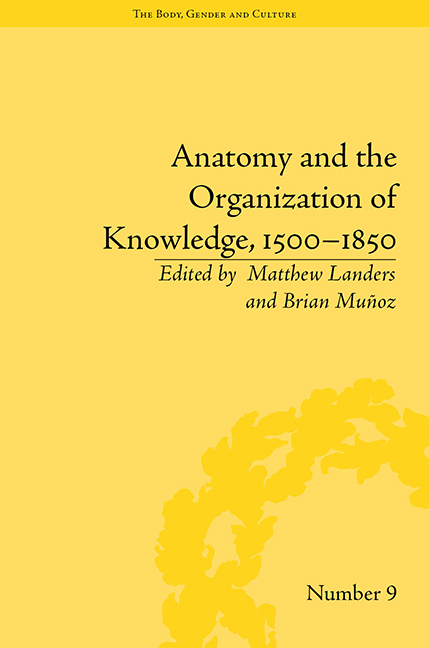Book contents
- Frontmatter
- CONTENTS
- List of Contributors
- List of Figures
- Introduction
- Part I The Body as a Map
- 1 Early Modern Dissection as a Physical Model of Organization
- 2 ‘Who Will Not Force a Mad Man to be Let Blood?’: Circulation and Trade in the Early Eighteenth Century
- 3 Earth's Intelligent Body: Subterranean Systems and the Circulation of Knowledge, or, The Radius Subtending Circumnavigation
- 4 ‘After an Unwonted Manner’: Anatomy and Poetical Organization in Early Modern England
- 5 Subtle Bodies: The Limits of Categories in Girolamo Cardano's De Subtilitate
- Part II The Collective Body
- Part III Bodies Visualized
- Notes
- Index
1 - Early Modern Dissection as a Physical Model of Organization
from Part I - The Body as a Map
- Frontmatter
- CONTENTS
- List of Contributors
- List of Figures
- Introduction
- Part I The Body as a Map
- 1 Early Modern Dissection as a Physical Model of Organization
- 2 ‘Who Will Not Force a Mad Man to be Let Blood?’: Circulation and Trade in the Early Eighteenth Century
- 3 Earth's Intelligent Body: Subterranean Systems and the Circulation of Knowledge, or, The Radius Subtending Circumnavigation
- 4 ‘After an Unwonted Manner’: Anatomy and Poetical Organization in Early Modern England
- 5 Subtle Bodies: The Limits of Categories in Girolamo Cardano's De Subtilitate
- Part II The Collective Body
- Part III Bodies Visualized
- Notes
- Index
Summary
Anatomical texts find a particularly receptive audience in Europe towards the end of the early modern period. K. F. Russell notes in his seminal work, British Anatomy: 1525–1800, that England produced only nine books on anatomy between 1500 and 1600; however, that number rose to fifty between 1600 and 1650, eventually climbing to ‘230 in the second half of the century’. Such an explosion of interest stems in part from Henry VIII's approval of human dissection for the advancement of medical knowledge in 1540. England, which had remained far behind the rest of Europe with regard to the development of the anatomical sciences, appeared ready to stake its own claim. It was not until William Harvey's publication of Exercitatio anatomica de motu cordis et sanguinis in animalibus (1628), however, that England had its first groundbreaking contribution to anatomical knowledge. Russell comments, De motu ‘at once placed Harvey in the forefront of anatomists and physiologists and put British anatomy on the scientific map’.
Harvey's first-hand knowledge of human anatomy played a crucial role in the discovery of the circulatory system. He was a student of Fabricius ab Aquapendente, who lectured at the celebrated medical school in Padua. Padua was at the time the uncontested centre of anatomical science, due in part to the reputation of its most famous anatomist, Andreas Vesalius, who published the revolutionary text, De humani corporis fabrica, in 1543.
- Type
- Chapter
- Information
- Anatomy and the Organization of Knowledge, 1500–1850 , pp. 9 - 24Publisher: Pickering & ChattoFirst published in: 2014

